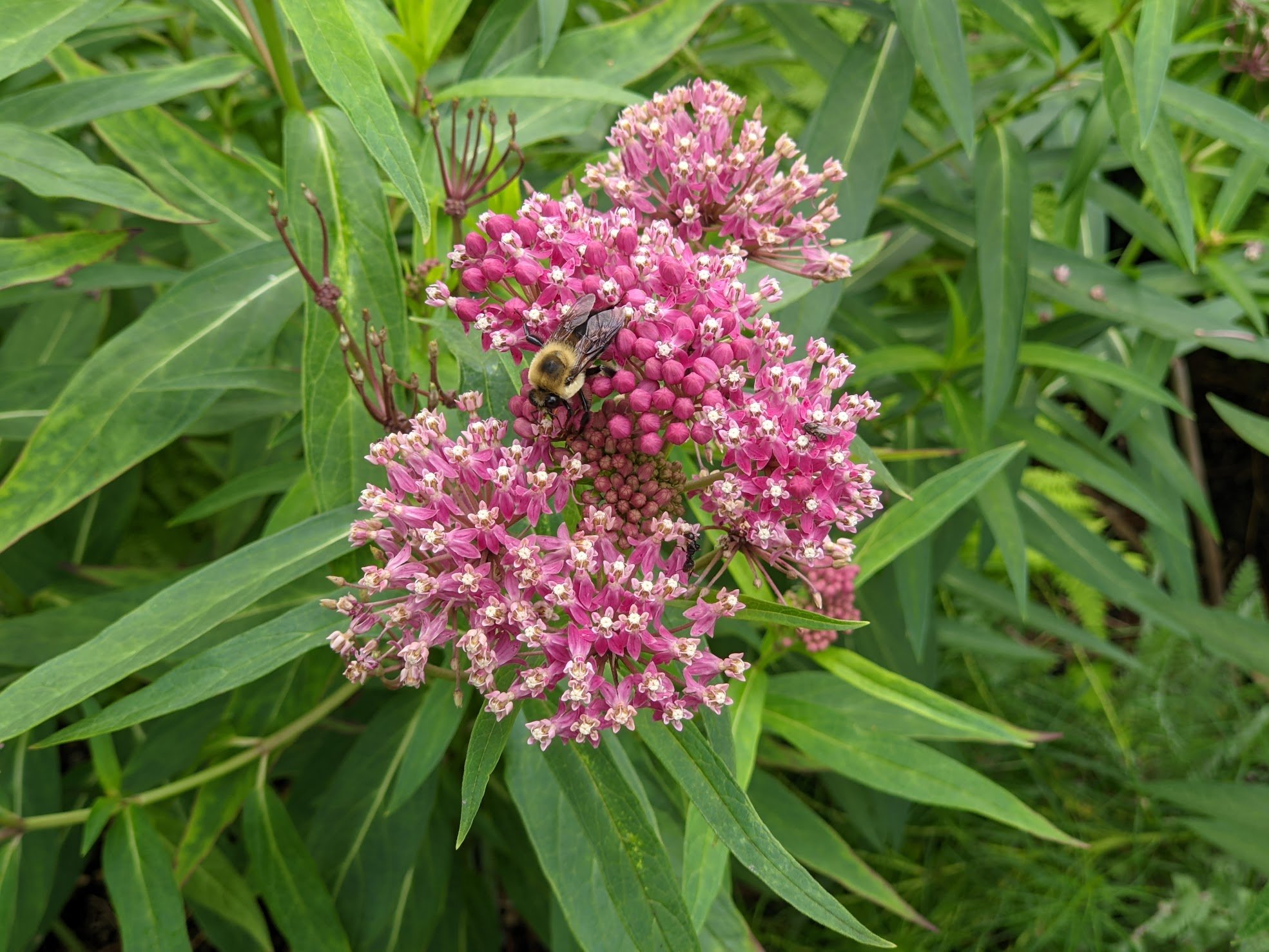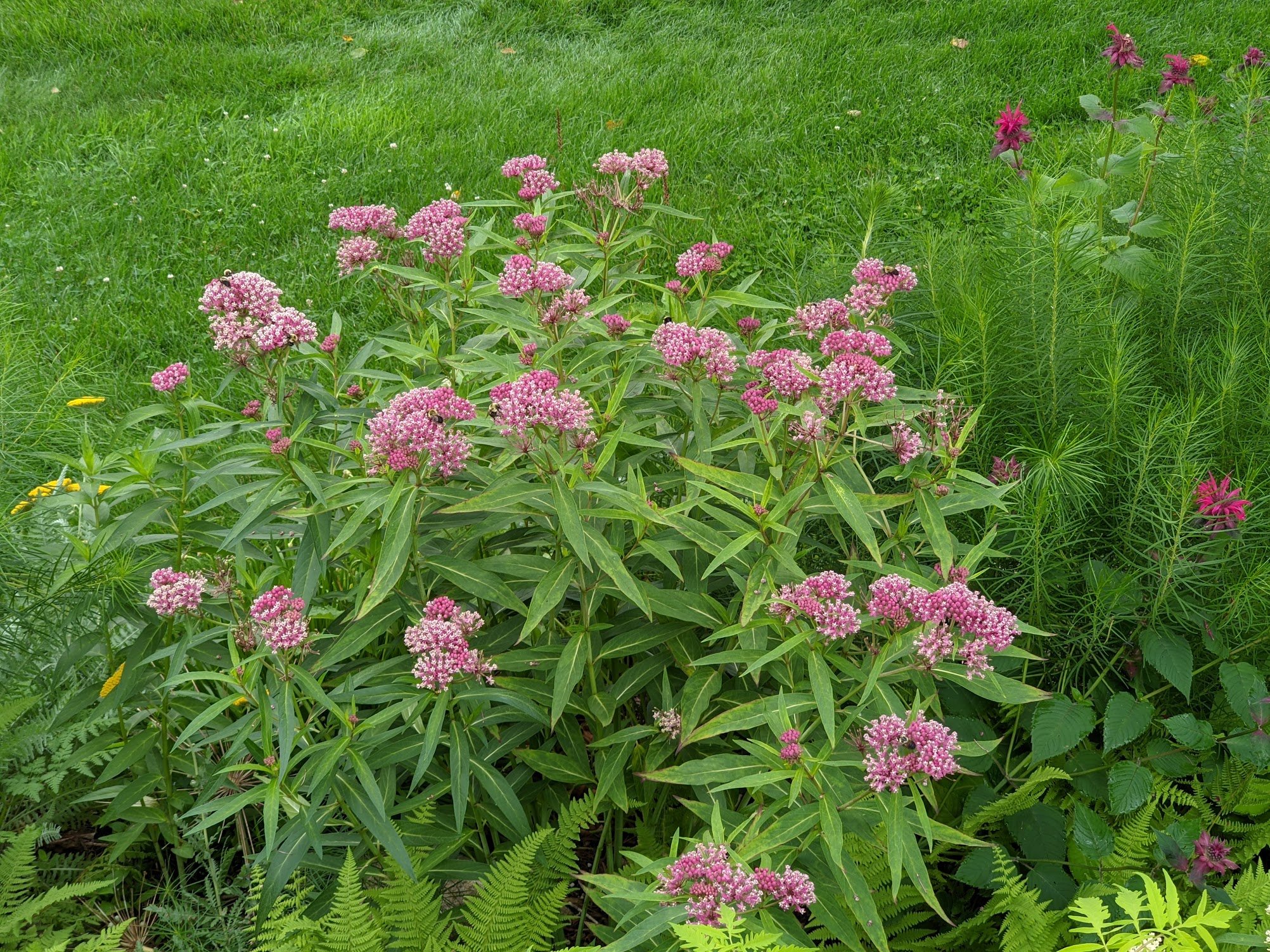Asclepias, aka “Milkweed”
If you chose to add one important plant for sustaining habitat in your garden, please chose Asclepias. Also known as “milkweed”, this native perennial is the ONLY plant upon which a female Monarch butterfly will lay her eggs. The leaves provide the primary food source for the hatched larvae who soon transforms into a chrysalis before gracing our gardens as a glorious butterfly.
Monarch butterflies need our help in rebuilding lost habitat along their migration routes. By planting one of three types of native milkweed, you can help them recover.
designing with milkweed
A favorite variety of mine is “tuberosa”, the shorter, more compact orange blooming variety shown below. It not only supplies Monarch food, it’s favored by hundreds of other native perennial bees and wasps which play a vital role in pollination.
Bees gathering pollen from asclepias ‘Cinderella’
Plant type: native to North America
Growing Conditions: full sun, tolerates average to poor soil and hot, dry conditions. Drought tolerant.
Size: tuberosa reaches 18”; incarnata & syrica can reach 3’ in height;
Spread: 1-2', can form colonies by rhizome or seed
Bloom: June through September in Zone 5b
Maintenance: low-maintenance
Biodiversity: host plant for Monarchs; frequented by all pollinators
Pairings: bee balm, coneflowers, catmint, phlox
Location: tuberosa, front of border; incarnata & syrica back of bed
Pests: the foliage is toxic to insects other than Monarch butterflies
Sourcing: through The Big Little Garden
The taller “incarnata” and “syriaca” milkweeds are stately back of the border perennials with long-lasting profusion of pink and white blooms. Whichever you choose, it’s advised that you only plant varieties that are native to your area. Planting a tropical milkweed here in New England could actually be more harmful to Monarchs as it may disrupt their regular breeding patterns. Use The Xerces Society milkweed seed finder here.
While milkweed is the larval host for Monarchs, the butterflies will feast upon most of the other pollen and nectar producing plants in your garden, including echinacea, monarda, nepeta, joe pye weed and tall phlox. Therefore, it is important to offer a wide variety of native plants that will bloom all summer and into autumn.
In August, 2019, we watched in awe as 3 different Monarch caterpillars munched asclepias leaves and grew larger and larger each day. Each one eventually turned into a pupa about 10 days later, eventually hatching and emerging as glorious butterflies (2 males, 1 female). It was an incredible experience to witness and to then discover them enjoying various nectar sources throughout The Big Little Garden!
Various types of milkweed grow throughout all areas of The Big Little Garden, from full sun to part shade:












